
Treating bees with powdered sugar
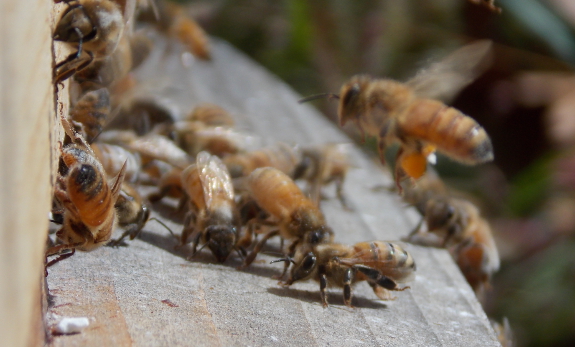
As I wrote nearly a
month ago, two
of our hives have an absurdly low number of varroa mites, but a
three-day-sticky-board count averaged out to 29 mites per day in
the third hive.
Even that relatively-high mite 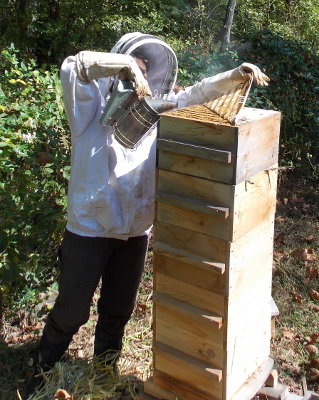 fall isn't so bad, but I've regretted it
before when I've let borderline hives go into winter --- they
often perish. So I decided to use one of safest methods of
mite control, treating the hive with powdered sugar.
fall isn't so bad, but I've regretted it
before when I've let borderline hives go into winter --- they
often perish. So I decided to use one of safest methods of
mite control, treating the hive with powdered sugar.
Scientificbeekeeping.com
has a fascinating
series of articles on the efficacy of using powdered sugar to
lower varroa mite numbers. The author, Randy Oliver, found
that 50% of the mites in a hive can be removed by adding half a
cup of powdered sugar per shallow (or a whole cup per deep) to the
top box. The sugar falls down through the cracks to coat all
of the bees present, making it tough for mites to keep their
footing. The bees do have to work hard that first day,
grooming off powdered sugar (and mites), but the intrusion is
worth it if you're worried about your mite population since so
many mites fall through the screen in the bottom of the hive and
perish..
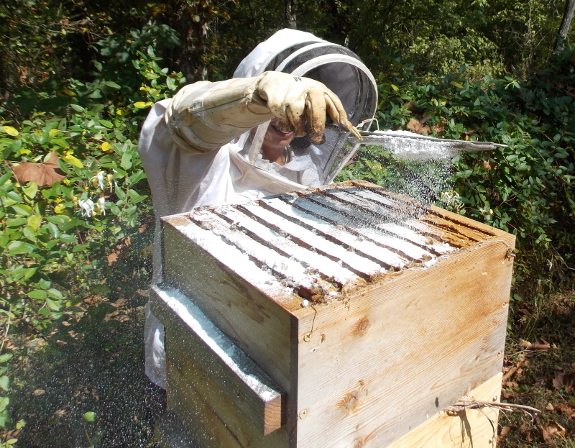
In addition to the
intrusiveness of the powdered sugar technique, there is another
downside to using powdered sugar as your sole mite-control
measure. Oliver explains that powdered sugar only removes
the mites currently on bees, and since mites carry out part of
their life cycle inside capped brood, you won't really do much
good if the bees are actively raising young at the time of
treatment. However, when colonies are letting populations
drop to get ready for winter, powdered sugar can really decimate
mite populations. Oliver concludes that properly-timed
powdered sugar applications (plus screened bottom boards) might be
all the treatment you need if you're raising bees that have been
bred to be mite-resistant.
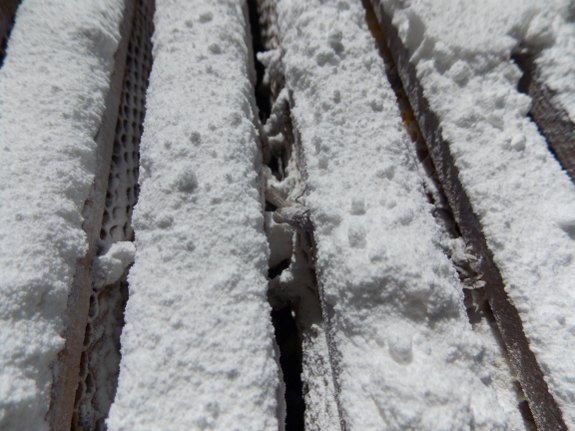
To return to my own
experiment, I smoked our bees gently just to make sure they
wouldn't fly up into the powdered sugar, then dusted the top of
the hive with 2.5 cups (half a cup per Warre hive box). The
sugar that built up on the top bars was easy to push back into the
hive using the bee brush.
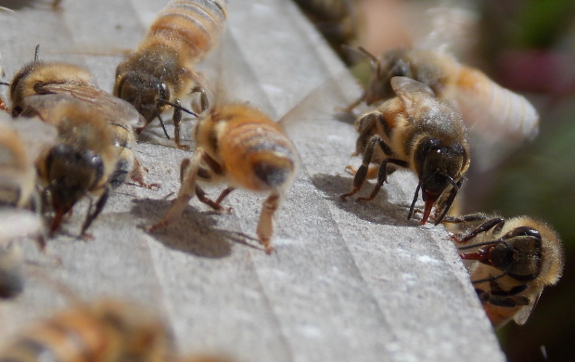
Immediately after
dusting the hive, I could see bees out on the porch licking up
powdered sugar. Although powdered sugar is harder for bees
to consume than sugar water is, our ladies are still able to
convert some into food, and, eventually, honey. So the
varroa mite treatment doubles as a quick feeding boost to lightly
prop up fall stores.
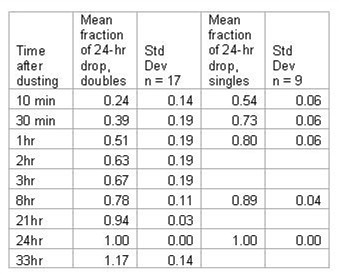 The other bonus of the
sugar treatment is that it gives you a more accurate portrayal of
probable mite levels in the hive, compared to the
potentially-problematic sticky-board counts. Just put the
bottom board in before treatment, take it out a timed interval
later, and count mites. The chart to the left comes from Oliver's
second article about powdered sugar, and the second column
shows what fraction of the total daily mite drop comes during
various intervals right after treatment. I counted 26 mites
on the bottom board of our hive 30 minutes after dusting with
sugar, so if we assume 39% of all the mites that were going to
fall that day had already hit the bottom, and that the treatment
will remove 50% of the mites in the hive, I get a population
estimate of 133 mites in the hive pre-treatment.
The other bonus of the
sugar treatment is that it gives you a more accurate portrayal of
probable mite levels in the hive, compared to the
potentially-problematic sticky-board counts. Just put the
bottom board in before treatment, take it out a timed interval
later, and count mites. The chart to the left comes from Oliver's
second article about powdered sugar, and the second column
shows what fraction of the total daily mite drop comes during
various intervals right after treatment. I counted 26 mites
on the bottom board of our hive 30 minutes after dusting with
sugar, so if we assume 39% of all the mites that were going to
fall that day had already hit the bottom, and that the treatment
will remove 50% of the mites in the hive, I get a population
estimate of 133 mites in the hive pre-treatment.
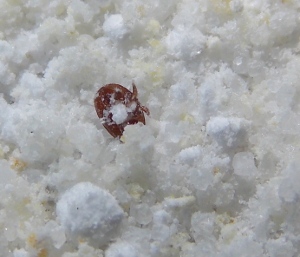 Actually, I think I
probably didn't use quite enough sugar, since Warre hives are so
tall compared to Langstroth hives. So, perhaps my sugar
treatment is only going to remove 25% of the mites from the hive,
providing a pre-treatment estimate of 267 mites in the hive
instead of 133. Either way, that's pretty low, suggesting I
probably didn't need to dust the bees with sugar, but the
treatment is unlikely to have done much harm, and potentially will
help the bees survive the winter since they won't have so many
parasites sucking their blood.
Actually, I think I
probably didn't use quite enough sugar, since Warre hives are so
tall compared to Langstroth hives. So, perhaps my sugar
treatment is only going to remove 25% of the mites from the hive,
providing a pre-treatment estimate of 267 mites in the hive
instead of 133. Either way, that's pretty low, suggesting I
probably didn't need to dust the bees with sugar, but the
treatment is unlikely to have done much harm, and potentially will
help the bees survive the winter since they won't have so many
parasites sucking their blood.
If I remember, I'll
run another sticky-board count in a few days to see what varroa
mite levels are like post-treatment. I haven't decided yet
whether I should treat the low-mite hives, or leave them alone to
go into winter without the day of trauma.
Want more in-depth information? Browse through our books.
Or explore more posts by date or by subject.
About us: Anna Hess and Mark Hamilton spent over a decade living self-sufficiently in the mountains of Virginia before moving north to start over from scratch in the foothills of Ohio. They've experimented with permaculture, no-till gardening, trailersteading, home-based microbusinesses and much more, writing about their adventures in both blogs and books.
Want to be notified when new comments are posted on this page? Click on the RSS button after you add a comment to subscribe to the comment feed, or simply check the box beside "email replies to me" while writing your comment.

I don’t see a reply how his Bees faired. Did you treat fir several days? If so, did you continue to see mites drop - high or low numbers? How many days and at what intervals?
Thanks SkinnySJB
I don’t see a reply how his Bees faired. Did you treat fir several days? If so, did you continue to see mites drop - high or low numbers? How many days and at what intervals?
Thanks SkinnySJB